Unlock your hotel’s profitability: a detailed guide to analyzing and optimizing your digital strategies
In today’s competitive outlook, a strong digital presence is not simply an option, but a strategic need to attract guests and ensure sustainable growth. However, investing in digital marketing without a clear understanding of your performance is like browsing without a compass. How do you know which tactics are actually filling your rooms and which are consuming your budget without generating tangible results?
The answer lies in theRigorous measurement of return on investment (ROI)of your digital strategies. This exhaustive analysis allows you to discern which initiatives are driving your reserves and which ones need to be adjusted or discarded. In this practical guide, we will explain step by step how to calculate ROI in the context of hotel marketing, what are theKey Performance Indicators (KPIs)Essentials that you should closely monitor and, most importantly, how to optimize your campaigns to maximize your income and reduce your operating costs.
The critical importance of measuring ROI in hotel digital marketing
TheReturn on Investment (ROI)Act as the compass of your digital marketing efforts. By quantifying the profitability of your online campaigns, it provides you with the information necessary to make strategic decisions based on specific data, instead of intuitions or assumptions. Understanding and analyzing your ROI offers multiple crucial benefits:
- Intelligent optimization of advertising investment:By tracking the performance of each of your digital campaigns, you can accurately identify which ones are generating the most reservations and which ones are not meeting your expectations. This allows you to reassign your budget effectively, investing more in successful strategies and reducing or eliminating those that do not offer adequate return.
- Reduction of the cost for customer acquisition (CPA):A detailed ROI analysis helps you understand how much it costs you to acquire each new reservation through your digital channels. This information is vital for optimizing the segmentation of your ads, improving the efficiency of your campaigns, and ultimately reducing the cost of attracting each new guest.
- Boost to direct reserves:By identifying the digital strategies that work best to attract qualified traffic to your website and turn visitors into guests, you can strengthen your direct booking channel. This minimizes your dependence on online travel agencies (OTAS) and maximizes your income by avoiding associated commissions.
- Strategic real-time adjustments:Constant ROI monitoring allows you to quickly identify campaigns that are not working as expected. This gives you the opportunity to make adjustments in real time, either by modifying the segmentation, optimizing the creatives of the ads or testing different messages, thus avoiding significant budget losses in ineffective strategies.
An eloquent example of the benefits of measuring and acting based on ROI is found in theBinn Hotel. By implementing a rigorous analysis of their digital strategies and making the necessary adjustments, they managed to achieve an impressiveReturn on advertising spending (ROAS) of 20x, which resulted in a significant increase in its overall profitability.
Essential KPIs to evaluate the success of your hotel digital marketing
To get a complete insight into the profitability of your digital marketing campaigns, it is critical to monitor a number of key performance indicators (KPIs). These indicators give you valuable information on different aspects of your strategy’s performance:
1. ROAS (Return on Ad Spend) – The barometer of your advertising investment
- What is the size?The ROAS tells you the amount of income generated by your hotel for each monetary unit invested in digital advertising. It is a direct indicator of the efficiency of your paid campaigns.
- Calculation formula: roTos=Total spending on advertisingIncome generated by advertising
- Practical example:If your hotel invests $5,000 in Google Hotel Ads campaigns and these generate $50,000 USD in direct bookings, your ROAS would be:roTos=5, ,00050, ,000=10xThis means that for every dollar invested in Google Hotel Ads, your hotel generated $10 in booking revenue.
- Interpretation of the results:
- Roas less than 3x:Indicate that your advertising campaigns need urgent adjustments to improve their efficiency.
- Roas between 3x and 5x:It suggests acceptable profitability, but there is still room to optimize and improve performance.
- Roas greater than 5x:It denotes an excellent performance of your advertising campaigns, generating a significant return on investment.
- Success Case:TheHaven MedellinHe managed to triple his direct reservations after implementing a Google Hotel Ads optimization strategy that elevated his 2X ROAS to an impressive 8X.
2. Website conversion rate – measuring the effectiveness of your reservation funnel
- What is the size?The conversion rate of your website tells you the percentage of visitors of your site who finally complete a reservation. It is a crucial indicator of the effectiveness of your website and your reservation engine to turn traffic into revenue.
- Calculation formula: conversion rateorˊn=(d)norˊtotal number of visits to the websitenorˊnumber of reservations made)×100%
- Practical example:If your hotel receives 10,000 visits to its website in a month and generates 300 direct reservations, your conversion rate would be:conversion rateorˊn=(d)10, ,000300)×100%=3%
- Interpretation of the results:
- Less than 1%:Indicates an urgent need to optimize the user experience (UX) of your website and the functionality of your booking engine to reduce friction in the reservation process.
- Between 1% and 3%:The average conversion rate for the hotel sector is considered.
- More than 3%:It represents excellent performance of your website and your booking engine in the conversion of visitors to guests.
- Success Case:TheThe Sky HotelIt managed to increase its conversion rate from 1.5% to 4.2% in just three months after implementing significant improvements in its online booking process, focusing on usability and efficiency.
3. Cost for Customer Acquisition (CPA) – The price of each new reservation
- What is the size?The CPA tells you the total investment in digital advertising necessary to get a new reservation. It is a key indicator of the efficiency of your marketing campaigns in terms of customer acquisition.
- Calculation formula: CPTo=norˊtotal number of reserves generatedInvestmentorˊn Total in advertising
- Practical example:If your hotel invests $5,000 USD in Google Ads campaigns and these generate a total of 250 direct reservations, your CPA would be:CPTo=2505, ,000=20USDThis means that it costs you $20 in advertising to acquire each new reservation through your Google Ads campaigns.
- Interpretation of the results:
- High CPA:It suggests that you are spending too much to acquire each new reserve. It is necessary to review the segmentation of your campaigns, optimize the conversion rate of your website and analyze the relevance of your ads.
- Low CPA:Indicates good performance and high profitability of your customer acquisition campaigns.
- Success Case:TheIrotama HotelIt managed to reduce its CPA by 30% by optimizing its digital advertising, fine-tuning the segmentation of its audiences and improving the conversion experience on its website.
4. ADR (Average Daily Rate) – The average rate per occupied room
- What is the size?The ADR represents the average income generated by each occupied room in your hotel for a specific period. It is a fundamental indicator of your pricing strategy and your hotel’s ability to generate income per room.
- Calculation formula: ToDR=norˊnumber of rooms soldTotal income for rooms sold
- Practical example:If your hotel generates $50,000 USD in income from the sale of rooms and sold a total of 200 rooms, your ADR would be:ToDR=20050, ,000=250USD
- Success Case:TheBinn HotelIt implemented effective upselling strategies and personalized promotions, which resulted in a 20% increase in its average daily rate (ADR).
5. RevPAR (Revenue per Available Room) – Income per room available
- What is the size?The RevPAR is a key indicator that measures the average income generated by each room available in your hotel, regardless of whether it is busy or not. Combine your average daily rate with your occupancy rate to offer a holistic insight into your income per room performance.
- Calculation formula: RandvpToR=ToDR×Occupation rateorˊn
- Practical example:If your hotel has an ADR of $250 USD and an occupancy rate of 80%, your RevPAR would be:RandvpToR=250×0.80=200USD
- Success Case:TheHaven MedellinIt achieved a 30% increase in its RevPAR over a six-month period by implementing dynamic pricing strategies and digital marketing campaigns aimed at increasing both the average rate and occupancy.
Key strategies to optimize the ROI of your hotel marketing
Once you understand how to measure essential KPIs, the next crucial step is to implement effective strategies to optimize your return on investment in digital marketing:
- Continuous optimization of digital campaigns:Perform A/B testing with different creatives, ad texts, audience segmentations, and bid strategies on platforms like Google Ads, Meta Ads, and TikTok Ads to identify the most effective combinations and maximize the return on your ad investment.
- Web conversion improvement:Invest in optimizing your website and your booking engine. Make sure that the user experience is smooth, intuitive, and secure on all devices. Implement SEO strategies to attract high-quality organic traffic and optimize your reserve engine to minimize the abandonment rate.
- Implementation of automation and CRM:Use marketing automation tools and CRM systems to customize communication with your guests, send segmented offers based on your history and preferences, and automate repetitive tasks, reducing operating costs and increasing customer retention.
- Constant monitoring and agile adjustments:Establish a continuous monitoring system for your KPIs. Analyze performance data on a regular basis and make agile adjustments to your strategies based on the results obtained. Flexibility and adaptability are key to maximizing ROI.
Essential tools for analysis and optimization
To carry out an effective analysis and optimize your strategies, it is essential to use the appropriate tools:
- Google Analytics:A powerful platform for measuring your website traffic, user behavior, conversions, and other key metrics.
- Google Tag Manager:A tool that allows you to manage and implement tracking tags on your website efficiently, facilitating tracking of key events and actions to measure conversions.
- CRM and automation systems (such as HubSpot and MailChimp):Platforms that help you manage relationships with your customers, segment audiences, automate email marketing campaigns, and improve loyalty.
ROI as a definite of success in hotel digital marketing
Ultimately, the return on investment defines the true success of your digital marketing strategies in the hotel industry. By focusing on profitable and measurable tactics, you can optimize the performance of your campaigns, attract more direct guests, and build a more prosperous and sustainable hotel business.
Hotels that prioritize ROI measurement and optimization are experiencing remarkable results:
- Increase of more than 40% in direct reservesThanks to carefully optimized digital strategies.
- Reduction of up to 30% in advertising costsBy identifying and focusing on the most profitable campaigns.
- Up to 35% increase in guest loyaltyThrough the implementation of automation systems and the personalized management of customer relationships.
Take the decisive step towards greater profitability
Are you ready to take control of the profitability of your digital campaigns and significantly increase your direct reservations? Do you want to discover how to optimize your investment in marketing to get the maximum return?
📞Contact us today atwww.digisap.comAnd discover how our team of experts can help you implement a robust measurement system, analyze your key KPIs, and develop personalized strategies to maximize your hotel marketing return on investment. It’s time to transform your digital efforts into tangible and long-lasting results!





